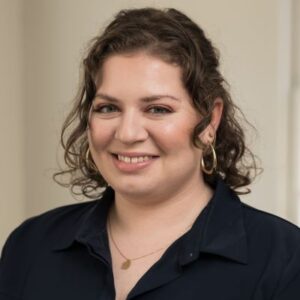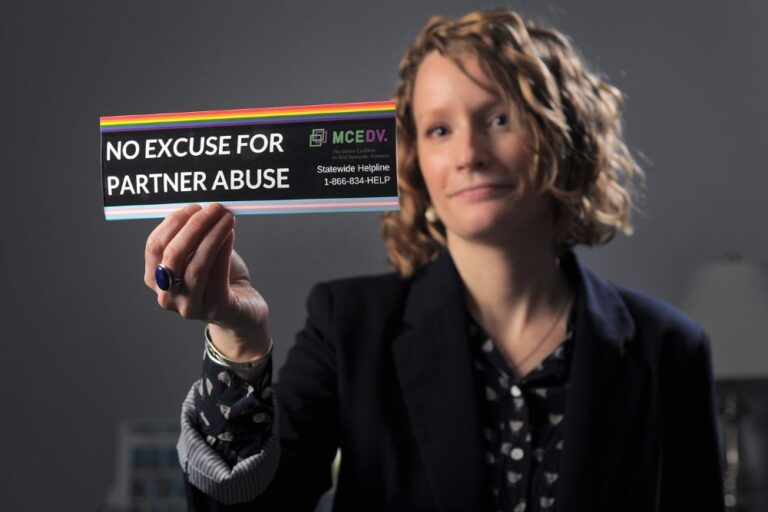Frustrated with syringe litter and what Sanford city manager Steve Buck said has been an unsatisfactory response by the Maine Center for Disease Control and Prevention, the Sanford city council is planning to vote Tuesday on an emergency ordinance that would restrict the number of clean needles that can be distributed by public health organizations.
“There has been for years an obvious observation that the number of inappropriately discarded syringes in the community has increased since the syringe exchange program has been here in Sanford,” Buck told The Maine Monitor on Friday.
Maine Access Points, a nonprofit focused on harm reduction, operates a Maine CDC-certified syringe service program in Sanford, the only one in York County. MAP provides sterile needles, naloxone, test strips and other supplies to people who inject drugs, and helps connect them to services with the goal of reducing overdose deaths and disease outbreaks.
MAP began its Sanford operations in 2020. At the time, Gov. Janet Mills had suspended a state rule that said harm reduction organizations could only hand out one clean needle in exchange for one used one, known as a 1-for-1 needle exchange.
Since then, the Maine Department of Health and Human Services has adopted a rule that allows syringe programs to provide up to 100 sterile needles for every used needle a participant brings in.
Harm reduction experts say that this needs-based approach is best practice, especially since fentanyl has proliferated in the state’s drug supply.
According to the U.S. CDC, new users enrolling in syringe service programs are far more likely to enter treatment and stop using drugs compared to those who don’t enroll. Last year, syringe service programs in Maine made more than 26,100 referrals to various services, such as primary care and housing assistance, more than double the amount in 2022.
Buck, like Portland Mayor Mark Dion and some other local officials in the state, believes the 1-for-100 rule change is responsible for an uptick in needle litter. He said that Sanford officials have met with the Maine CDC and MAP four times to discuss the city’s concerns but were unable to find a solution.
He added that city officials did not feel their concerns about the “public health hazard” created by improperly disposed syringes “obtained adequate recognition” from the Maine CDC.
Anna McConnell, MAP’s executive director, said the ordinance strikes her as a “big escalation.” She and MAP colleagues Nikki Butler and Maggie Zall, who run the Sanford location, have spoken to city officials about how to reduce syringe litter, like doing more frequent syringe pick-ups, installing sharps boxes or collaborating with the police.
The emergency ordinance, if passed, would be in effect for 91 days from the date of adoption and would restrict syringe service programs operating in Sanford to a 1-for-1 needle exchange.
It would ban the distribution of “starter kits,” which allow syringe service programs to provide 10 clean needles to new participants. State rules have allowed programs to provide initial exchange kits since at least 2008, according to annual reports.
A similar proposal introduced by Dion was rejected by the Portland city council last month.
The ordinance would give the Sanford police department the power to fine any person found violating the rule up to $100 for the first offense, up to $200 for the second offense and up to $500 for each subsequent offense within a one-year period.
In a letter to Buck and the city council dated Nov. 6, Maine CDC director Dr. Puthiery Va said that a “strict 1:1 exchange would be detrimental to the public health and will not address the separate public health concern of needle waste.”
“The science is clear,” Va wrote. “Restricting syringe access has been linked to poor community health outcomes, including infectious disease transmission, drug-related overdoses and other health problems.”
Limiting the needle exchange ratio, she added, “does not mean there will be fewer syringes improperly disposed of.”
Va also provided the city with a list of syringe waste management proposals, including installing public sharps boxes and partnering with syringe service programs to provide education on proper syringe disposal.
Sanford does not have any public sharps disposal boxes. When asked if the city had considered installing any, Buck said he doesn’t see that as the correct approach.
“The city does not want sharps containers scattered throughout all of our parks and public places and such,” he said. “It does not paint a positive light.”
The city also has limited public trash cans, but Buck said adding new ones is “not the solution.”
“We don’t have trash scattered throughout our community,” he said. “We have needles.”
Gregg Gonsalves, a Yale University epidemiologist, previously told The Monitor that from a public health perspective it makes sense to approach needle waste as its own issue.
“The cost of instituting a clean-up program in these jurisdictions, in these cities and these towns, is far, far less expensive than paying for the lifetime medical costs for somebody who is HIV positive or HCV positive,” he said. “The economic argument is just unequivocal.”
Butler and Zall, from MAP, said they are also concerned about syringe waste, but are worried that a 1-for-1 rule would only increase litter while leading to worse health outcomes for people who inject drugs. Not only can reusing or sharing needles spread blood-borne diseases like HIV or hepatitis C, but it can cause severe bacterial infections.
“Everyone in Sanford has the same ideal: we all want to take care of our community,” Zall said. “The fear that we hold is that by prioritizing a community of people, we’re leaving another set of community members kind of in the dust.”







